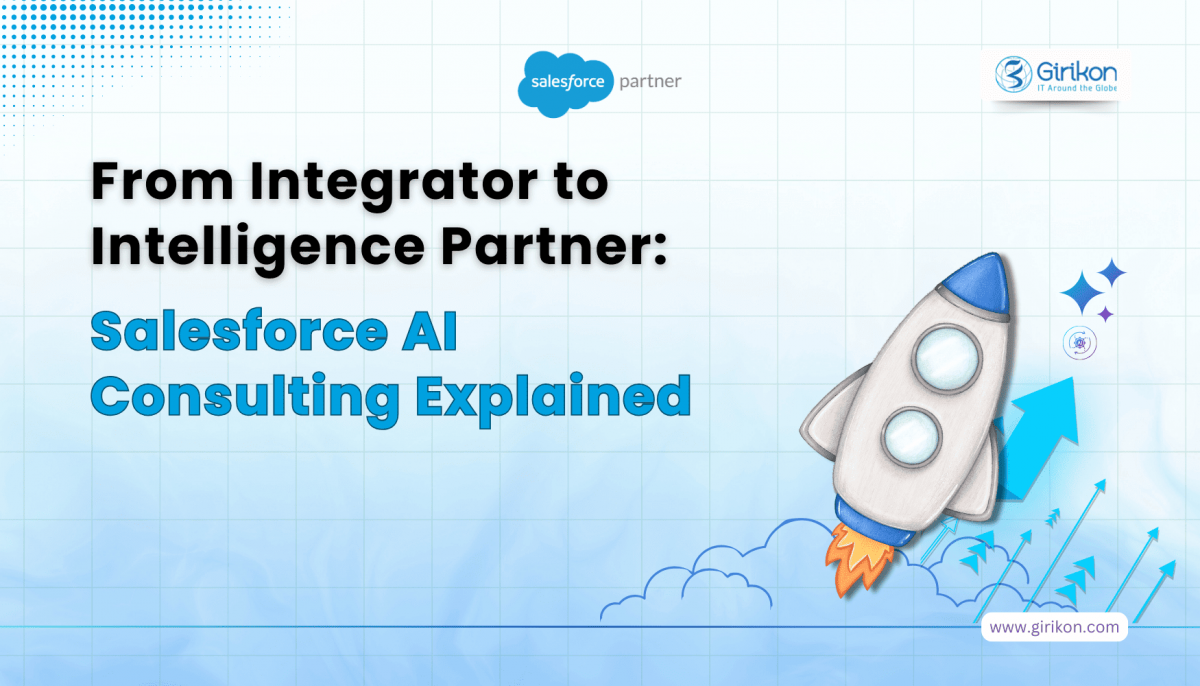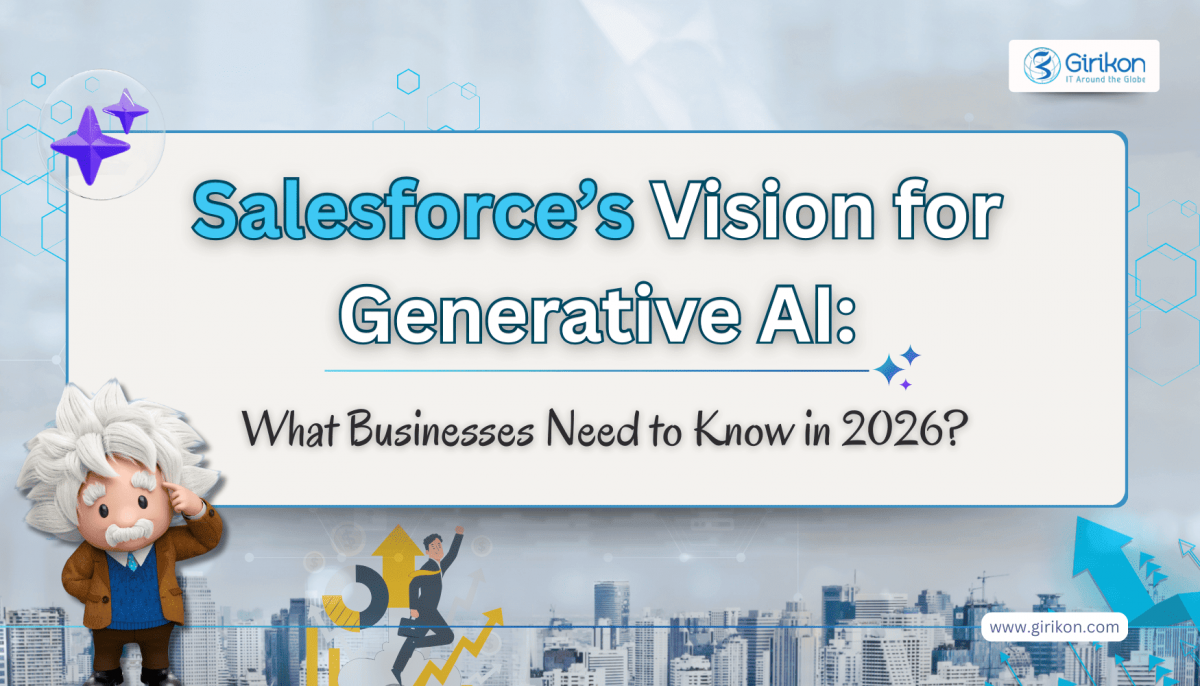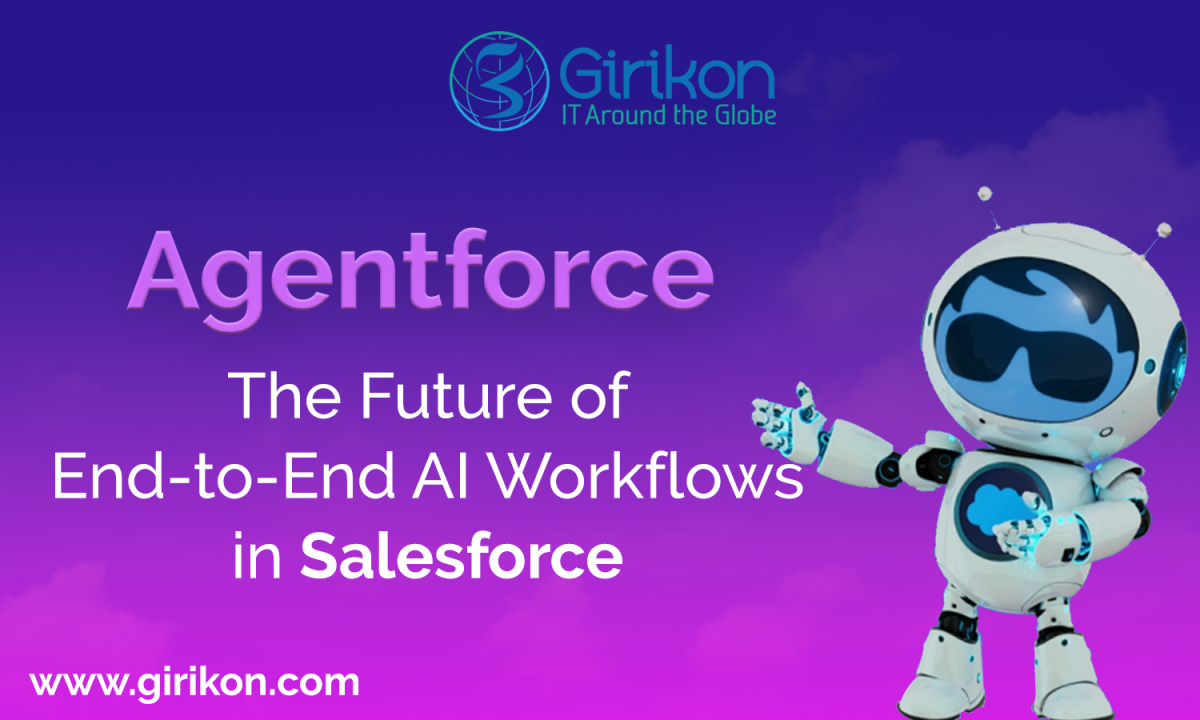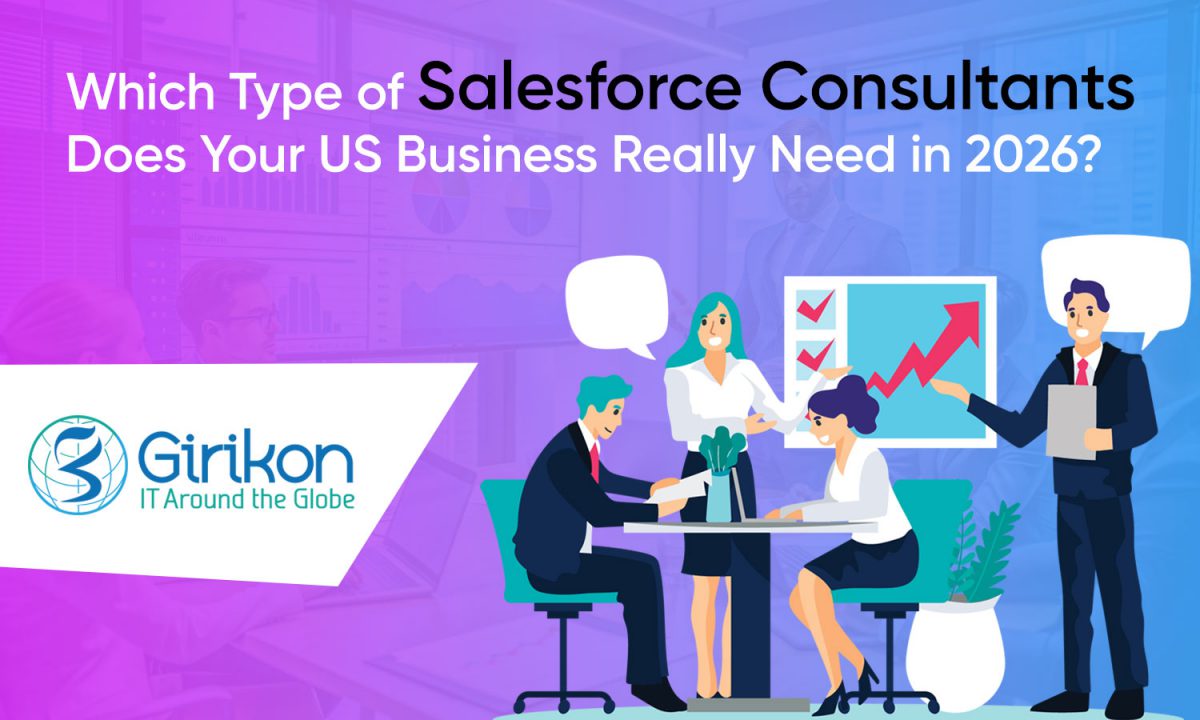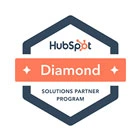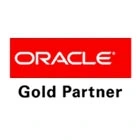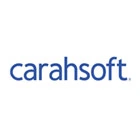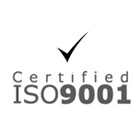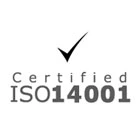Some Salesforce Consultants are successful in building a stable client base that they nurture and grow over time while others find it a rocky road and eventually hit a wall. Have you ever wondered what the difference is? Client relationships. Strong client relationships are the foundation for a successful Salesforce Consulting practice. Loyal customers are not only a joy to work with, but they also stay longer with you and are happy to refer new clients.
How to build lasting client relationships?
Below we have compiled a list of actionable ways to nurture and grow client relationships that will not only improve client satisfaction but also grow your business.
Pay attention to detail and gather all information
The foundation of a strong consultant-client relationship is laid before the client even signs up. Good consultants are aware they need as much information as possible about the prospect to come up with a proposal that stands out from the competition. And the key component of that proposal is how it aligns with the business’s goals and values and the personalities of the people you’ll be working with.
This means collecting “objective” information like:
Their products and services.
The end-users and their profile.
Top 3-4 competitors.
Prioritized goals and associated challenges.
Strategies that have not yielded desired results in the past.
Tools, apps, and systems currently being used.
Budget – long term and short term.
Expectations from a new consultant
It also includes “subjective” information such as:
What is their definition of success?
Future business plans such as new products or services.
Mission and values they stand for.
What is unique about them and how are they different from their competitors?
Skills, experience, interests, and preferences of the team you’ll be working with.
What are their pain points and wants from a new consultant?
Absorb the information
The intel you collected will be utilized not only in your bid document but will also be leveraged throughout the entire project execution lifecycle. Take the time to absorb and understand every point in depth so that it is made evident in everything you do.
Go above and beyond with your proposal
From the point of view of a project, your bid illustrates how you will go about achieving your client’s goals. From the point of view of a relationship, it’s an opportunity for you to demonstrate that you have a deep understanding of your client’s business and its people.
To be successful, you need to seamlessly link what and why.
What refers to activities included as a part of the project and why should link one of the "whats" to one of the business goals? Once you identify the why, establish the expected measurable outcome once the why is addressed. Include in your proposal how you will measure this outcome.
This approach demonstrates your commitment to the client’s business and its people and shows that you care about the people impacted by your proposed offering.
Have an onboarding process
Once the client has signed up with you, there are bound to be regular interactions across the user group. A smooth onboarding process sets the benchmark for free and open communication and ensures smooth execution which is necessary for a long-term client relationship. Start with a kick-off meeting to ensure everyone is on the same page and well-versed with the goals and expectations of the project.
Treat clients as partners
Treating your clients as partners in success lays the foundation for a purposeful and fruitful engagement, where both your and your client’s points of view are respected, and each does their best to ensure success. At the end of the day, it’s a transactional relationship and a well-defined partnership ensures that each party delivers its end of the bargain.
Be proactive
Share fresh ideas and propose new strategies.
Inform the concerned teams in advance about any disruptions that may be caused due to system changes or changes in requirements.
Educate the teams and empower them to be proactive.
A proactive approach based on transparent communication lays the foundation for a seamless execution and ensures success for all concerned.
Be a good listener
Clients can at times get reactive about results. While you may be doing a great job with your project, the results are not going through the roof. Instead of stone-walling the client’s perspective, use a more empathetic approach such as:
“I see what you’re talking about. It’s a valid point. “
“We’re glad you brought this up. Let us review this and allow us a week to report back to you.”
Position yourself as a partner in the journey. Value everyone's point of view, evaluate objectively, and present your findings to build a long, trusting relationship.
Establish a framework for communication
Conduct scheduled meetings with relevant stakeholders and end them with clearly defined action items
Set up weekly or fortnightly meetings to review progress and answer questions. Make the meetings more about listening than talking. This illustrates your intent to be accountable and helps build trust with the client. Leverage text messaging to build rapport and personal connections with team members and foster a more informal way of working.
Share your concerns early
This is particularly relevant when the business landscape is changing rapidly. Avoid saying yes to everything they want. Clients may have big plans and as a consultant, it's your job to double-check on everything they want for its viability, its efficacy, and impact on the overall project. Understand the challenges – both short-term and long-term, and communicate your concerns clearly.
Establish quarterly business reviews
Quarterly reviews with the senior leadership are a great way to build on relationships. Make these reviews focussed on high-level strategy, allowing the client to reflect on long-term goals. Review past strategies, what's worked and what hasn't, and pivot if need be.
Quarterly reviews are also the apt time for a client to provide insight into the changing business landscape, and the shift in goals (if any), and to establish how these changes impact the scope and budget of the ongoing project.
Strong client relationships are the backbone of a successful Salesforce Consulting practice. It lays the foundation for increased loyalty and referrals and makes the journey a joyful one.
One of the primary drivers of research in Artificial Intelligence (AI) has been to create AI systems that can build viable and powerful computer programs to tackle complex business challenges. Recent developments in this area especially the rapid strides made by Large Language Models (LLMs), have brought about this radical shift in thinking. LLMs were originally developed for comprehending natural language but now they have taken machine intelligence to another level. LLMs can now create code and text, setting a new bar for AI development.
Until now, LLMs have been reasonably proficient in handling routine programming tasks. However, they often falter when confronted with complex programming challenges. One of the major stumbling blocks in their use for solving programming problems has been their tendency to generate code blocks as monolithic entities instead of breaking them down into granular, logic-based code blocks with specific functionality.
Human developers on the other hand are easily able to create modular code when dealing with complex problems. They tap into their knowledge base of pre-existing modules to accelerate the development of solutions to new problems.
Salesforce Research recently introduced CodeChain, a cutting-edge AI framework to bridge this gap. CodeChain leverages a series of self-revisions driven by sub-modules created in earlier iterations to streamline the process of creating modular code. At the core of CodeChain lies the methodology of enabling LLMs to approach problem-solving to create logical subtasks and reusable sub-modules.
There are two iterative phases in the sequence of self-revisions in CodeChain.
Sub-Module Extraction and Clustering: In this phase, sub-modules are identified by analyzing the code generated by the LLM. Next, these sub-modules are organized into clusters. From each cluster, representative sub-modules are selected which are identified to be more widely applicable and reusable.
Prompt Enhancement and Re-Generation: The initial chain-of-thought prompt is further improved and regenerated by integrating the selected representative modules from the previous phase. Next, the LLM is asked to produce new modular code solutions once again. This way, the LLM can leverage the information and understanding from earlier iterations to enhance them further.
CodeChain has already been shown to have a significant impact on code generation. Salesforce has indicated that by asking the LLM to enhance and reuse pre-existing sub-modules, the modularity and accuracy of generated solutions are greatly improved.
Comprehensive studies have been conducted to investigate deeper into the factors that contribute to CodeChain’s success. These investigations look at aspects like prompting technique, LLM model size, and code quality. The insights from these studies reveal why CodeChain excels in improving the quality and modularity of code generated by LLMs, making it a potential game-changer for AI-powered code generation.
CodeChain leverages chain-of-thought prompting to generate modular blocks of code which drives natural selection of the LLM to select parts of the generated solution for reuse and refinement.
CodeChain’s release by Salesforce AI marks a key milestone in AI-powered code generation. Its ability to boost modularity and accuracy, along with significant improvements in pass rates indicates a giant leap forward. This disruptive framework is poised to transform the programming landscape, empowering businesses to quickly build and deploy effective solutions.
Introducing CodeGen: Turning Prompts Into Code
The Salesforce Research team recently announced the launch of CodeGen – a new LLM that leverages conversational AI to generate accurate and modular code.
With CodeGen from Salesforce, both programmers and business users can use natural language prompts to define what they want the code to do such as build an app that throws up the last customer interaction. The LLM translates those prompts into code, effectively creating an app using just written instructions.
With CodeGen’s conversational AI capabilities, business and technology teams can eliminate the time and resource-intensive process of building apps from scratch. CodeGen empowers programmers to build apps quickly without much coding, freeing up more time for complex tasks that necessitate a human touch.
The CodeGen Solution
In simple terms – with CodeGen, all you need to do is describe what you want your code to do in natural language and the machine will write executable code for you. This is the next generational promise of conversational AI programming from CodeGen. It makes coding as easy as talking.
Here’s an example to illustrate the power of CodeGen.
When you want to eat a certain dish for dinner, you need to know all the ingredients required to make the dish want and then you have to cook it yourself. You need to know the serving size, the proportion of each ingredient, and the steps to follow.
Now, let’s say you go to a restaurant powered by CodeGen.
You just tell the server what dish you want, and they prepare it and serve it to you. Just describe the dish you want in a short sentence, and it will be served to you without any involvement from you in its creation. You don’t need to specify any ingredients or explain the steps involved in cooking it or provide any other associated instructions. You don’t even need any knowledge of any culinary terms either.
The restaurant kitchen behaves like an intelligent entity, converting your plain sentence into a sequence of steps that takes all the ingredients, in the most appropriate proportion and creates the outcome (in your case the dish you asked for).
Now imagine, instead of a meal you are “ordering” an app that can perform certain functions. That’s the basic idea behind CodeGen.
Salesforce’s implementation of conversational AI programming highlights its commitment to an inclusive approach to software programming to bring it to the masses. AI translates natural language descriptions into fully functional and executable code empowering anyone to build apps even if one has no prior knowledge of programming. According to Salesforce, CodeGen, their LLM which powers conversational AI programming will soon be available as open source to accelerate research.
The launch of CodeChain from Salesforce AI is a landmark event for innovators around the globe. With its ability to improve code modularity and accuracy, it can empower IT teams to dramatically accelerate problem-solving. This disruptive framework is poised to transform the way we approach and solve business problems. To learn more about AI-powered code generation, contact Girikon, a Gold Salesforce Consulting Partner today.
There has been a gradual shift in the way customers interact with businesses, over the past few years. For ensuring long-term customer-relationships, organizations should focus on compassion, convenience, personalization, and digital transformation. So, how are organizations delivering seamless experience to users? They are doing so by strategically and systematically planning digital transformation on the right platform and Salesforce Lightning provides the right platform to develop applications quickly. It makes sense to get in touch with a service provider that offers reliable Salesforce Consulting Services
What is Salesforce Lightning?
Salesforce Lightning platform is a cutting-edge platform that empowers users to enhance their CRM platform and user experience (UX) in an improved manner. The user interface of the Lightning platform was unveiled by Salesforce in the year 2015 and has since then evolved into the standard interface for all Salesforce enterprises. Thanks to its distinguishing design, productivity tools, and integrated artificial intelligence features, Lightning streamlines business operations and help businesses attain their objectives. Businesses can create personalized and adaptable applications using the Lightning Component-based framework, all the while providing immersive user experiences through Lightning components.
Why is Salesforce Lightning Preferred Over Salesforce Classic?
While Salesforce Classic provides numerous CRM features, end users are increasingly seeking a streamlined user-centric design with fewer clicks and modern functionalities like drag and drop. By identifying this demand, Salesforce has introduced Lightning Experience, the next iteration of the Salesforce user interface designed to augment speed and productivity. With the 'mobile first' approach gaining prominence, there is a pressing need for responsive user interfaces and single-page applications. Lightning offers a set of tools and technologies that provide a fresh and contemporary user experience appropriate for both desktop and mobile applications.
How is Salesforce Lightning Re-defining User Experience?
Salesforce devised a user-friendly and intelligent platform that boosted the productivity of sales teams seamlessly while facilitating greater and quicker deal closures. The look and feel of Salesforce Lightning incorporate user interface improvements like readable text, graphics and icons resulting in a more lucid view of the business. Moreover, the application offers upgraded dashboards that enhance the visibility of critical metrics for specific business units, enabling a holistic overview for all teams and customers.
The Lightning Platform offers an enhanced user experience through the incorporation of drag-and-drop functionality along with heightened security settings for Salesforce implementations. Lightning serves as an intelligent tool that adapts to existing organizational habits and patterns, providing smart recommendations as and when utilized. It streamlines the access to Contacts, Quotes, and Proposals for sales professionals thereby reducing the need for excessive clicks and external work, which ultimately enhances the efficiency of sales teams.
Why Should Businesses Prefer Migrating to Salesforce Lightning?
Businesses that have migrated to Salesforce Lightning Experience are likely to be more productive than those working in Salesforce Classic. The Salesforce Lightning allows businesses to close deals faster with enhanced rate of collaboration and conversion.
For better end-user experience, the Lightning platform offers robust functionality.
Lightning provides high-end security to users.
It provides user-friendly interface that allows you to create responsive applications.
With Lightning, businesses can offer superior customer services, improved personalization and increased rate of conversion.
The databases are updated automatically to provide you with intelligent insights with the help of Einstein Analytics.
What are the Significant Benefits of Using Salesforce Lightning for Your Business?
Salesforce Lightning can assist businesses with several benefits including increase in their productivity, seamless operations, and work on modern interfaces. Some of the benefits offered by Salesforce Lightning include:
Sales Automation: Achieving cent percent efficiency in converting leads into sales is nearly impossible. Therefore, organizations are creating different strategies to boost their conversion rates, although the outcomes may not always fulfill their expectations. Salesforce Lightning with its latest features aims to automate the sales process.
Enhanced User-experience: Salesforce offers a modern and intuitive interface for the Lightning framework. Though, the changes are difficult to observe with the naked eye, the overall experience is seamless. The interface is customizable and is designed to increase productivity.
Quick Development of Apps: Creating and building applications has never been easy than it is today. Due to the component-based nature of Salesforce, businesses can seamlessly incorporate pre-made components from Salesforce partners and incorporate them into your application. The most delightful aspect is that you can effortlessly employ these components by simply dragging and dropping them.
Quality Leads: Ample amount of time is left post your application development and optimization of your sales process. The time left can be allocated to Einstein AI Technology, which helps in understanding the specific needs and objectives while monitoring possible leads. Its tracking capabilities include comprehensive data on all potential leads about their sales preferences, performance, and interactions. Einstein uses this data to filter the leads before you approach them in-person. This ensures that organizations will receive high-quality leads which are most likely to turn into sales.
Data Privacy: Data privacy remains the pinnacle feature of any framework. You would not appreciate breaching the policies and sneaking into your business information. With the new updates in Lightning, CRM has focused on privacy. The individual components that are a part of the Salesforce Lightning framework cannot interact with each other. This eliminates the likelihood of malicious activities while providing a fresh interface for the users.
Quick Wrap-up:
Salesforce Lightning is one of the best available CRM solutions for building customized applications. With Lightning, organizations can augment the competence of sales and marketing teams while increasing overall ROI. If you want to migrate from Salesforce Classic to Salesforce Lightning or simply implement Salesforce Lightning, you must get in touch with a reputed Salesforce Lightning Company
When Salesforce acquired Vlocity in 2020, it acquired the capability to sync its core platform with industry-specific solutions & processes. This tailoring of its cloud offering addresses industry specific business needs as well as legal and regulatory needs of companies. Salesforce Industries also offers enhanced data models to serve various industries such as Financial Services, Government, Health, Government, Manufacturing, FMCG, Energy & Utilities, Communications and Media & Entertainment.
More often than not, architects find themselves working on a project with industry-specific requirements. And they need out-of-the-box capabilities from the Salesforce Platform.
What is Salesforce OmniStudio?
Salesforce OmniStudio is powerful suite of 4 core task-based components. They are:
OmniScript
DataRaptor
Integration Procedure
FlexCards
These components empower architects to consolidate applications, quickly bring up new users to productivity, and lower overall costs-to-serve. Salesforce OmniStudio is available as a complete native managed package that can add additional functionality to your existing Salesforce instance.
Data model
Salesforce Industries comes with industry-specific data models, as a layer on top of the Salesforce object model. The data model is completely additive. It is designed to enhance standard objects and fields or allow addition of new custom objects and fields. In other words, there is no duplication of any existing entity.
OmniScript
Architects across the world prefer tailored solutions to simplify maintenance and operations of systems. If you wish to deliver engaging digital experiences which can seamlessly integrate into your website, then OmniScript will help you get the best out of your engagements. With OmniScript you can easily deal with industry-specific cases.
OmniScript enhances interactions by offering tools that are user-friendly can be tailored to deliver additional value to end-users. Also, it offers a code-less environment since it comes with ready-made aspects which can be deployed easily across channels and devices.
Functionalities of OmniScript:
It allows you to easily compose interactive processes for every use case, and allows you to branch easily.
OmniStudio comes with a drag-and-drop OmniScript editor feature. Architects can use this feature to proof-read their work. There are also in-built troubleshooting tools to fix the processes.
Device and channel agnostic. Users can access it from anywhere – whether mobile or web. If you are using a mobile app, you can use the OmniOut function to install Lightning Web Components (LWC) OmniScripts for these systems.
It allows for easy prototyping of user experiences enabling reuse without any challenges by distinguishing between the JSON metadata structure, the data, and the templates.
Allows easy generation of LWCs which can then be used in the Lightning App Builder.
DataRaptor
DataRaptor is a user friendly mapping tool. It allows architects to efficiently extract, store, and access data. DataRaptor allows easy configuration for negotiating any data. With DataRaptor, architects can easily extract, load and transform data conveniently.
There are main 3 components in DataRaptor are:
DataRaptor Extract – It allows you to retrieve data from Salesforce. With DataRaptor Turbo Extract, you can restore data from a single Salesforce source
DataRaptor Load – It allows you to save data
DataRaptor Transform – As the name suggests, it allows you to transform data
DataRaptor acts a connecting bridge between Salesforces and OmniScript/ FlexCard. It loads data from Salesforce and sends it to these sources and sends updated data from these back into Salesforce. It can auto-generate Apex REST web services to work seamlessly with external applications.
Integration Procedure
Integration Procedure is a declarative process that allows you to generate multiple actions with a single hit. It reads data from Salesforce and writes data back to it. With integration procedure, you can also do the same with external systems through REST calls. Integration procedure also allows you to execute Apex code without any user interaction.
These are the features of Integration Procedure:
Executes functions across multiple data sources such as Salesforce, external systems.
Can serve as a data source for OmniScript, FlexCard, REST or Apex.
Trims data that is served to the browser from the server reducing data transfer traffic.
Process huge amounts of data easily.
Allows you to easily load and transform data from third-party sources without any user interaction.
Works with clicks not code, which allows for easy integration and configuration.
Automatically creates REST endpoints to work seamlessly with external systems.
Works seamlessly with Declarative Platform Cache configuration that improves performance and reduces server processing at scale.
FlexCards
FlexCards is an integral part of Salesforce Industries. FlexCards allows you to create industry-specific UI components catering to specific customer needs. FlexCards uses the LWC framework and allows for easy deployment options via Community Builder and App Builder.
FlexCards acts as a data source for DataRaptor, Integration Procedure, REST, Apex etc. When using FlexCards, only data that is relevant to the user is thrown up based on the configuration.
The features of FlexCards are:
Displays consolidated, concise, and relevant information.
Allows for contextual actions to improve collaboration across business operations
Can be tailored to customer preferences across channels and devices
Can access and assess data from Salesforce and external applications
Has an intuitive code-less declarative editor
Auto-creates Lightning Web Components
Advantages of Omnistudio.
Accelerate innovation with declarative tools that empower you to go digital quickly.
Easily deploy industry-specific processes fast to automate interactions
Simplify integrations with drag-and-drop functionality with a modular, granular-service oriented approach
Build tailored flexible, scalable and branded user interfaces with an intuitive code-less configuration
Automate the customer service experience easily with just a few clicks
Make your business agile with scalable digital engagements.
Create code-less, guided user experiences
Allow your users to accomplish complex tasks effortlessly with a flexible, scalable, branded user interface. Easily help them navigate through sales and service processes with quick and personalized responses. Seamlessly integrate with your Salesforce CRM and external systems.
Integrate with external data easily.
Use declarative data mapping and REST interfaces to manage complex data structures fast with a drag-and-drop intuitive interface. Connect with external systems to seamlessly bring in data into the tailored, branded experiences created using OmniScript and FlexCards
Empower agents with contextual information
Streamline and optimize your processes by showing only the data you need, when you need it. Construct guided user interfaces with clicks, not code. Quickly get data into FlexCards from multiple sources.
OmniStudio gives you the tools to accelerate value realization.
Interaction Console
Get easy access to dashboard components that give you a 360 degree view of the entire customer journey and offer insights to help resolve issues faster.
IDX Workbench
Easily migrate changes and manage cross organizational dependencies and simplify DevOps. Visualize and compare changes across versions in a desktop app. Easily switch components across source control, sandboxes, and production.
Omni Analytics
Visualize data to understand process performance and identify trends. Take actions to improve core metrics and KPIs.
Project Explorer
Structure industry processes by organizing metadata into collections that can be accessed from anywhere in the org. Search and navigate easily across items.
At Girikon, a Salesforce Implementation Partner, we recognize the promise that Salesforce Industries and OmniStudio bring for architects. And with Salesforce’s commitment to continued enhancement, it promises enduring productivity and innovation for architects. Contact us today to learn more.
What is Salesforce Einstein GPT?
-
May 9, 2023
-
Indranil Chakraborty
In March 2023, Salesforce launched Einstein GPT, the World’s First Generative AI for CRM.
Einstein GPT uses the power of generative AI to deliver personalized content across every Salesforce product, thereby making teams more productive and delivering a better customer experience.
Einstein GPT is open and scalable, and supports public and private AI models built specifically for CRM. Einstein GPT is trained on trusted, real-time data and seamlessly integrates the with the OpenAI framework to deliver out-of-the-box generative AI capabilities to Salesforce users.
The new ChatGPT app for Slack integrates seamlessly with OpenAI’s deep AI technology to power instant conversations, and provide research and writing assistance.
Whether it be sales, service, marketing or commerce, Einstein GPT for Salesforce will transform every customer experience at never seen before scale. In a sense, it opens a new door to the AI future for all Salesforce customers.
Salesforce has fused its proprietary AI models with generative AI technology in Einstein GPT that unifies and synchronises all of a company’s customer data. Using Einstein GPT, customers can now easily connect that data to OpenAI’s advanced AI models, or use their own model and natural-language prompts directly within their Salesforce CRM to seamlessly generate content that self-adapts continuously to changing customer needs in real time.
For instance, Einstein GPT can create personalized email drafts for sales reps, generate automated and tailored responses for service reps to respond to customer queries more quickly, generate appropriate content for marketers to augment campaign efficacy, and developers can get access to auto-generated code allowing them to build and deploy apps much faster.
Going Deeper: Einstein GPT in CRM
Salesforce Einstein is already delivering over than 200 billion AI-driven predictions everyday. Einstein GPT is the next generation of Einstein, and by combining proprietary Salesforce AI models with OpenAI, customers can use natural-language prompts on CRM data to trigger powerful, time-saving automations, and create personalized, AI-generated content.
Sales: Auto-generate routine tasks like drafting emails, preparing meeting schedules, and prepping for follow ups.
Service: Auto generate articles from case note archives. Auto-generate conversational and personalised chat to smartly engage with customers. Fast track service interactions and enhance the customer experience.
Marketing: Dynamically generate personalized and engaging content faster than ever to interact with potential and existing customers across channels.
Slack : Get AI-driven customer insights in Slack for eg. smart summaries of sales opportunities and self updating knowledge articles.
Developers: Developers can auto generate code by utilising Salesforce’s proprietary language model to ask contextual questions for languages like Apex through an AI chat assistant.
Einstein GPT is in-built in Salesforce. Which means you can use your private data to tailor everything it generates suited to your unique business. And since Einstein GPT is available across the entire Salesforce platform, it can improve every single customer experience.
Salesforce understands that generative AI encompasses more than just ChatGPT. Einstein GPT has been designed to allow seamless integrations with other language models. This allows developers to bring their preferred model using normalized APIs and an open network of AI partners.
Einstein GPT is designed to empower businesses with path breaking AI capabilities, using your own data and models to drive customer experiences.
Embedding AI into the Salesforce platform has delivered huge operational efficiencies for partners and customers. Generative AI technology has the potential to transform the way companies engage with their customers, deliver powerful experiences, and drive customer retention. Generative AI technology will drive the next generation of customer experience.
Einstein GPT for Salesforce Developers
As technology innovation progresses, so does the way developers write and analyze code. Generative Artificial Intelligence is perhaps the most exciting development in recent years for code generation and analysis. This technology has the power to make development faster, more efficient and accurate.
Let’s look at how Salesforce AI Research is powering Einstein GPT for developers across the globe and how it will change the way apps are deployed on Salesforce.
Generative AI for code (Apex)
Code generation involves using machine learning algorithms to analyse large amounts of existing code, and then generate new code based on that analysis. This is particularly useful for tedious tasks, such as drafting emails. One obvious and huge benefit of code generation is that it saves a lot of time for developers. Instead of writing every line of code from ground up, developers can use AI-powered tools to generate most of the required code automatically. Not only does this accelerate the entire development process, it also reduces the chances of human error.
Code generation has many benefits, including:
Code standardization: Automating generation of repetitive code blocks that guarantees consistency and standardization of code.
Accelerated prototyping: Generative AI based code generation accelerates the prototyping process by quickly creating run of the mill code. Codebase becomes more scalable because of standardization.
Simplified code: Generative AI automates the creation of repetitive code blocks thereby simplifying it. Code becomes easier to maintain and scale.
Salesforce Consultants and Developers can now derive the benefits of Einstein GPT within the IDE experience. With inbuilt natural language processing capability, developers can have auto generated code created for them within the Code Builder as per their specific needs.
The machine learning algos that drive the generative AI experience in Einstein GPT are based on Salesforce’s proprietary models and enhanced with best-in-class coding guidelines.
Static and dynamic Apex analysis
Code analysis is another field where AI is making significant progress. As software development become more and more complex, it becomes increasingly challenging for developers to precisely analyse and understand the code. Salesforce is piloting a new capability this year for Apex analysis. With this feature, developers can quickly and precisely analyse large amounts of Apex code, identify potential defects, runtime and other inefficiencies.
This will save Salesforce Partners and developers a substantial amount of time and effort. They would no longer have to manually sift through each line of code to find potential problems. One of the key benefits of AI is that it can identify potential problems easily that developers may miss at runtime.
AI-driven code analysis and code generation work synchronously. Using AI powered static and dynamic analysis, patterns in your code base will be fed back into the code generation process in run time, and vice versa.
Conclusion
AI-driven code generation and analysis is changing the entire development paradigm. And this is just the beginning. Going forward, Salesforce has plans to assist with automated test generation, intelligent code clarification, and more.
If you are a Salesforce Consultant, this is an exciting time for you. Generative AI has the power to take CRM to the next level. With Einstein GPT you can get multi-dimensional insights of your CRM data and deliver never before seen value to your customers with the power of AI.
Girikon is a Certified Salesforce Development Partner delivering value to customers across the globe. To know more about how Einstein GPT can work for you, contact us today.
In today’s competitive era, businesses must consider integrating and synchronizing products, their pricing, inventory, and other business details to fulfill the evolving needs of modern consumers. To meet these demands, businesses require robust tools such as Salesforce Commerce Cloud and MuleSoft. You can seek Salesforce support from a reliable service provider to know more about these platforms.
The integration of MuleSoft and Salesforce Commerce Cloud ensures a connected commerce experience and allows organizations to unify commerce data from any system, and quickly launch into new markets while providing enterprise-grade security to ensure the safety and security of corporate data. In other words, MuleSoft and Salesforce Commerce Cloud can provide a connected commerce experience.
What is Salesforce Commerce Cloud?
Salesforce Commerce Cloud is an e-commerce solution that empowers organizations to sell their products and services across different channels, including social, mobile, and the web. This cloud platform helps retailers provide a superior shopping experience to their customers.
This platform provides brands the agility to remain competitive and ensure the following:
Proficiently launch and manage stores across different channels, geographies, and dialects through a cloud-based commerce platform.
Test and deliver changes.
Modernize while prioritizing actionable insights that drive better business decisions.
Salesforce Commerce Cloud Is Only as Powerful as the Data That Lies Behind It
With Salesforce Commerce Cloud, businesses can take the online shopping experience a notch higher than that of a traditional e-commerce platform by capturing customer data. In fact, this innovative platform has transformed the way organizations conduct their business by launching into new markets faster while ensuring security from threats.
This is possible through API-led connectivity that amalgamates crucial data from legacy systems, CRM, ERP, and partners like delivery logistics providers. However, digital transformation via API-led connectivity depends significantly on the data that backs it. This is where Salesforce Commerce backed up by MuleSoft comes into the picture as it connects all the commerce systems and creates a steady customer view across the organization. MuleSoft’s Anypoint Platform allows you to centralize data while creating an omnichannel experience.
Since customer data is an asset that can be leveraged by organizations to improve customer service by using digital technologies and integrating data while making it accessible in real-time. Real-time data ensures quicker customer support and increased satisfaction.
APIs help in integrating different systems together and creating a data-driven model. This ensures precise decision-making. In addition, such an approach to data provides insights by tracking customer engagement patterns and gathering more data. By integrating customer data with Salesforce Commerce Cloud, you can get a comprehensive view of your customers while furthering your brand loyalty by having all customer data gathered in a single solution.
What is MuleSoft?
MuleSoft is a reputed provider of Enterprise Integration Platforms. MuleSoft connects all the data, applications, and devices across different business entities. They enable organizations to gather their data in real-time, actionable, and secure information.
MuleSoft along with its Anypoint Platform is one of the best integration platforms available and allows businesses to connect with different applications while ensuring system-to-system integrations are easy and cost-effective. Additionally, the platform provides a unified platform to help organizations manage their business process activities to enable efficient connectivity across people, devices, and systems.
MuleSoft has put an end to point-to-point legacy integrations that hinder digital transformation.
The Influence of MuleSoft and Salesforce Commerce Cloud:
If the solutions that you are using currently do not allow you to tap into data from various sources, you're stuck inside one system. If you are willing to venture into new markets then it would consume more time and money. The right solution would be to combine your requirements in a single system, which is possible with Salesforce Commerce Cloud and Mule Soft which allows you to connect with other systems quickly.
To Wrap-up:
To succeed in today’s competitive era, businesses must create great customer experiences, which is possible by having ready access to customer data. However, brands are likely to stay behind if they fail to centralize their data. Salesforce and MuleSoft together are a perfect match as they both are dedicated to leveraging APIs and connectivity to help organizations succeed through digital transformation. To know more about the benefits of these platforms, it’s essential to get in touch with a certified Salesforce implementation partner.
Most businesses have realized the significance of going digital. However, the digital landscape is extremely competitive and sustenance requires businesses to automate their processes while ensuring operational efficiency. This is where the need for a robust CRM arises. As a cloud-based platform, Salesforce enjoys huge popularity and widespread adoption.
However, unlocking the actual potential of a Salesforce platform can be challenging for businesses without the support of a Salesforce professional. It’s crucial for organizations to partner with a reliable and experienced Salesforce consultant that can help them overcome their limitations and unlock the immense potential of this platform.
A consultant can provide necessary support and guidance regarding upgrades and customizations that can make your organization more productive across your business processes. Their ability to troubleshoot problems through Salesforce can help you deal with unique challenges while figuring out solutions that will help your business flourish.
Why Should You Engage the Services of a Salesforce Professional?
A Salesforce consultant has extensive experience in handling this robust customer relationship management (CRM) platform. Being professionals, they remain up-to-date on the latest product upgrades and applications while ensuring quality, productivity, and reduced costs.
The services offered by a reliable Salesforce consulting partner include more than just the basic platform functions but can also help create custom tools, manage integrations, and leverage the complete capabilities of the platform. From nonprofits to building services to businesses in the financial and healthcare sector, almost every industry can take advantage of these optimizations.
Listed below are some of the key benefits of Hiring Salesforce Consulting services:
Data Migration from Other CRM platforms to Salesforce: If you haven’t used Salesforce before, you would not just require setting it up for the first time but also migrate your data from an outside source. A professional can help you set up the CRM seamlessly besides managing the migration in a way that every component is handled optimally. Additionally, they will help you keep your data organized and clean so that it becomes easy for you to sort through them.
Setting Up Customized Dashboards: To draw maximum value out of your CRM, it’s important to get your dashboard customized. For creating customized dashboards based on your business needs, Salesforce offers multiple options. However, creating customized dashboards in Salesforce isn’t easy and requires custom fields for accommodating certain tools and calculations, which your team might require to find quality leads. A professional service provider can enable you to design a dashboard as per the unique needs of your business, which will maximize data analysis and ultimately give a boost to your business. With a dashboard, it becomes easy to filter your data, quickly find the information you require, and track your prospects.
Providing Training and Support: The upgrades and updates of Salesforce make the platform valuable. However, several organizations struggle to keep up with these changes. To understand which upgrades will have the maximum benefits, you must consider getting in touch with a reputed consultant who will manage essential updates and upgrades for you that will increase productivity and benefit your unique. They also assist in training your employees so that user productivity on the platform increases. This will empower your team to bring in more customers and close more deals. Proper support for training and Salesforce implementation will allow everyone to work more efficiently.
Maintaining an Organized System: Data gathered by sales reps when organized from time to time plays an important role in upholding the usefulness and functionality of the Salesforce platform. Some organizations end up deserting their Salesforce integrations when their data becomes unsystematic and unmanageable. This problem usually arises when several sales reps log in at the same time and enter records incoherently. An experienced Salesforce partner can help by auditing the records while preventing a buildup of unusable records.
They also help in sorting data and taking necessary steps to prevent the accrual of glitches in the first place. They can assist in the creation of custom wizards that will guide sales reps through data entries, creating uniformity and consistency within the data entry irrespective of who created the entries. Custom wizards can be used to streamline the Salesforce quoting process, which requires several steps and doesn’t assure uniformity.
Augments Your Ability to Find New Leads: Salesforce empowers your sales reps to collaborate easily with prospects and several new customers irrespective of where they are. The robust CRM promotes communication skills along with collaboration within teams thereby boosting productivity, as well as the ability to find leads.
Salesforce consultants play a significant role in motivating your internal sales team members. You can create healthy competition among your sales reps through gamification. Based on key metrics from the CRM, consultants can help create leaderboards so that all your sales reps can view each other's results, as well as bests in different categories.
Final Words:
Salesforce has emerged as the number one platform in the CRM space. With its wide array of features and functionalities, Salesforce has become the preferred choice of businesses. However, to make the most of this amazing platform, it’s important to partner with one of the best Salesforce consultants who can take customer communication to a new level. They can help businesses utilize the tools that can automate processes and ensure operational efficiency.

 +1-480-241-8198
+1-480-241-8198 +44-7428758945
+44-7428758945 +61-1300-332-888
+61-1300-332-888 +91 9811400594
+91 9811400594